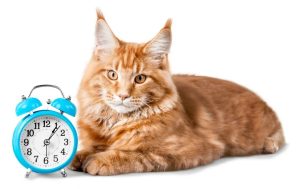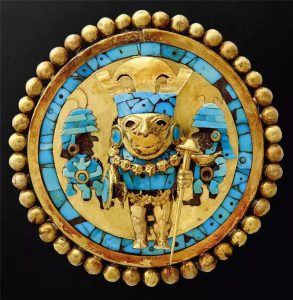Recently, the cat at Lizi’s house has been waking me up at 5 AM every day, acting like a living alarm clock. It can even be found waiting at the door just a few minutes before I get home from work. While I’m touched by this, it also made me wonder: Do cats, who don’t read books or watch the news, have a sense of time? How do they keep track of it?
-
The Mouse and Virtual Door Experiment
Scientists have long been curious about whether animals have a sense of time. Do they perceive the passage of time in the same way that we do? To explore this, researchers from Northwestern University in the U.S. conducted an experiment with mice. The results, published in the Nature Neuroscience journal in 2018, are considered one of the most convincing experiments showing that animals can understand time.In the experiment, the researchers placed mice on a treadmill with a VR screen in front of them, which created a virtual corridor and door. The treadmill allowed the mice to walk endlessly, and in the virtual environment, they believed they were walking through a “hallway.” After reaching a virtual door (colored), the mice would stop, and after a 6-second delay, the door would open, allowing the mice to pass through and receive a food reward. After repeating this process several times, the researchers changed the colored door to a transparent one. When the mice reached the door, they still waited for 6 seconds before passing through.The researchers observed brain activity in the mice’s medial entorhinal cortex while they waited at different doors. When passing through the colored door, the neurons controlling spatial encoding in the entorhinal cortex were highly active. However, when passing through the transparent door, a different set of neurons became active. The researchers believe this activity is related to the concept of time.Conclusion: The experiment suggests that animals are likely capable of both memory and an understanding of time. While this experiment was not conducted with cats, scientists speculate that dogs and cats, like mice, can also judge the passage of time. They can tell if you’ve come home later than usual or if it’s time for their meals. They can even distinguish between varying lengths of time. This can be further supported by the following experiment.

-
The Separation Experiment with Cats
In 2017, researchers at the Swedish University of Agricultural Sciences conducted an experiment to study how cats respond after being separated from their owners for different periods of time. The study involved 14 cats and 14 owners. Each owner left their cat for either 30 minutes or 4 hours, and after each return, the owners interacted with the cats in the same manner to observe their reactions.The study found that cats who were separated for 4 hours showed more excitement and affection upon reunion. For example, more cats would meow and purr. This suggests that cats can perceive the length of time they are apart from their owners.Conclusion: Based on the different reactions from cats after reunions, it is clear that they can differentiate between varying lengths of time. The longer they are apart, the more they miss their owners and the more excited they become when reunited.
-
How Cats Keep Track of Time
From the above experiments, we know that cats have a sense of time, but how do they manage to keep track of it without smartphones or watches? How can they wake us up at the same time every day? How do they calculate and judge time?Behaviorists believe that cats rely on both their internal biological clocks and external environmental cues.Internal Clocks: Cats are creatures of habit. They tend to perform certain activities at the same time each day, such as sleeping or patrolling. This allows them to develop their own internal clocks, also known as circadian rhythms. Anita Kelsey, a feline behaviorist, believes that like humans, cats possess an internal clock that helps regulate their sleep and wake times. Cats can also use internal cues, like hunger, to determine what part of the day they are in. For example, cats typically have breakfast at 6 a.m. and can use their hunger to estimate how long it is until lunchtime or if their meal is delayed. Internal cues like hunger, thirst, and the regularity of bowel movements help cats track time.Cats are habitual creatures, and after entering human society, they often adjust their schedules based on their owner’s behavior. For instance, when their owner is home on weekends, a cat may choose to stay with them instead of sticking to their usual sleep schedule. This is why a cat’s biological clock often becomes more synchronized with its owner’s.External Clocks: Besides their internal clock, external environmental factors are also important time indicators for cats. Just as ancient humans used the position of the sun to tell time, cats rely on changes in daylight and bird songs to gauge the time. While cats aren’t performing precise calculations, these external cues are sufficient for their daily routines. Cats also link observed external signals to predict upcoming events. For example, when the alarm clock rings, it signals that their owner is about to wake up, so some cats will wait by the bedroom door. When their owner starts eating, the cat knows it’s almost time to be fed.
In conclusion, cats have their own way of judging time. Even though they don’t read books or watch the news, they can tell if you’ve been out longer than usual or if their meals are being served late. So, whether it’s mealtime or coming home, cat owners should try not to make their cats wait too long!





